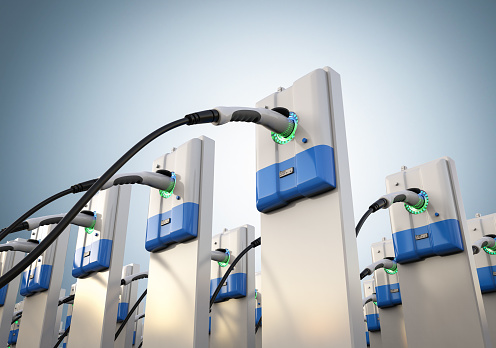Konstantin Solodovnikov, CEO, Innolith
A common belief in the e-mobility industry is that Lithium-ion batteries have reached their full potential. But this is where the EV market’s most damaging crisis is rooted. Because if true, what was meant to make electric vehicles (EVs) a critical part of our future has played a pivotal role in stunting adoption – battery sustainability.
Current EV battery production and disposal methods harm the environment more than their internal combustion engine (ICE) vehicles counterparts. The use of cathode materials and the resulting environmental footprint is a core factor, and Lithium-ion batteries not being fully recyclable only exacerbates the situation.
Some have looked for alternative sources to spearhead battery cell innovations, like Solid State and Silicon Anode. Over the past 12-18 months the former proved to have manufacturing and cost issues, and the latter performance challenges. Others in the industry have turned to battery cells powered by iron, magnesium and silicon.
Breakthrough battery innovation to power e-mobility
But it’s the development of the first Li-ion battery to use the only fully recyclable inorganic electrolyte that is set to free EVs from the key barriers to mass adoption.
This breakthrough in battery chemistry innovation means EV battery cells containing fully recyclable electrolytes are now a reality. As such, EV battery production can become a significantly cleaner process than previously thought. These new cells will reduce the use of key components lithium, nickel, cobalt and manganese by 20% per kWh and offers an unforeseen opportunity to reuse sulphur dioxide (SO2), a by-product of mining and related polluters.
Championing a circular economy
At the current rate, landfill sites will be filled with 250,000 tons of battery over the next 15 years. These new inorganic electrolytes help address this problem as they can be recycled repeatedly. In addition to supporting a circular economy, they reduce waste management requirements, which come with their own environmental and financial costs.
If used worldwide, inorganic electrolyte battery cells could reuse up to 10% of manmade SO2 pollution by 2035. Furthermore, the huge reduction in raw materials will significantly diminish the EV industry’s environmental impact. Together, these factors complement six of the UN’s sustainability goals, including, making EVs more accessible to all, lowering costs and leveraging the circular economy.
Mass adoption is certainly possible. Inorganic electrolyte battery cell technology can be easily integrated into 99% of the e-mobility market and all EV manufacturer production lines where cylindrical batteries are used. It is also highly compatible with existing and future supply chains, production equipment, and processes
But this isn’t the limit of the benefits for EV manufacturers. Via better production processes, raw material integration and improved efficiency of the use of the energy inside of a battery pack, these new battery cells will achieve 10-20% improved performance.
Rolling with the climate
One often-overlooked barrier to EV adoption is temperature range. This has hindered car buying markets and the adoption of EVs in areas like warehouse logistics, transport and manufacturing.
At 0°C, conventional EV batteries experience a drop in performance that gets significantly worse as temperatures fall. The new inorganic non-flammable electrolytes provide vastly improved temperature ranges – from -40°C to +60° C for discharge and -20°C to +60°C for charging – allowing batteries to operate in extreme conditions.
All-weather battery cell technology opens up the possibility of e-mobility entering space travel and delicate earthbound ecosystems, with new EV batteries supporting scientific discoveries as they fuel vehicles through environments ICE emissions would damage.
A greener, safer, longer dive
These environmental credentials have been developed without sacrificing battery performance too. Inorganic electrolytes provide higher energy density, superior charging times, and a 40% reduction in heat release in case of a thermal runaway for better safety.
EVs will now be able to deliver on their promise of addressing the environmental issues created by ICE vehicles. With the new breed of cells overcoming the limitations of conventional Li-ion batteries, it provides an economical alternative that reduces costs and EVs that need less maintenance and service support – encouraging adoption.
Building European momentum
Global demand for Li-ion battery demand is to increase ten-fold with China and Europe expected to be the largest contributors. And EV sales are rising globally, with 52% of consumers looking to buy according to the recent EY Mobility Consumer Index (MCI).
Here, we find China is still dominating the global battery race. EVs rely on Li-ion batteries of which China produces 76%, while the U.S. makes only 8% and Europe even less at 3%. As such, China leads EV battery supply (76%) and the world EV market.
Developed and produced in Switzerland and Germany, recyclable electrolyte batteries mean Europe can close the gap in China’s dominance in the EV battery market and control of the supply chain.
Europe has a heritage in the automotive industry and an economy that prides itself on environmental leadership. Batteries with increased performance and sustainability credentials are critical for the mass adoption of EVs but thus far most of the innovation has come from Asia. Europe needs to have a seat at the table.
Good things happen when there’s competition – it spurs further innovation.
Breakthroughs and advances in Li-ion battery tech have given it a new lease of life and one that means EVs can fulfil their true potential in the next few years, not in the future. This presents an opportunity to advance sustainable change, encourage EV adoption and champion European innovations on a global stage.

